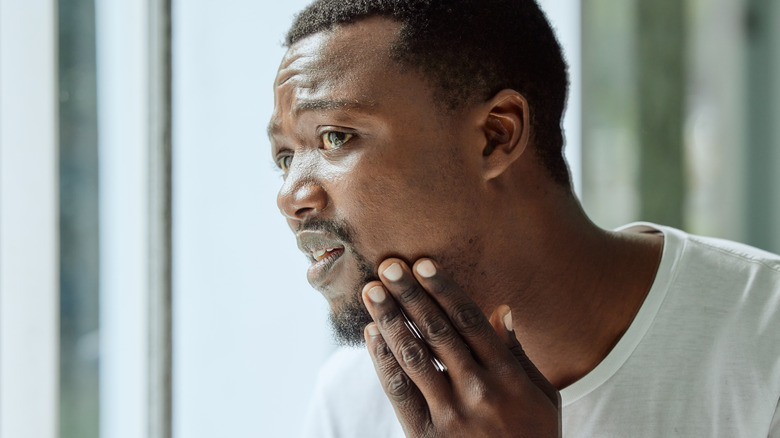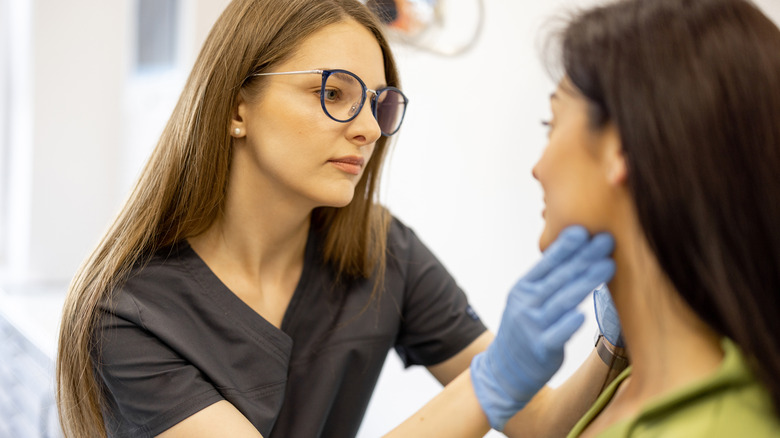What Taking Prednisone Every Day Does To Your Face
Your doctor may recommend long-term daily use of corticosteroids for chronic conditions such as arthritis, asthma, eczema, lupus, tendonitis, or a related inflammatory disease. Corticosteroids such as prednisone can help ease the symptoms of these problems; however, the drugs have two known side effects that can alter your facial shape and appearance.
The first face-related change is casually referred to as "moon face." Having a moon face (or what some call "cortisol face") due to prednisone side effects means that your face has taken on extra roundness, especially in the areas in front of your ears. As board-certified dermatologist Dr. Gary Goldenberg explains, "you can get that from extremely high corticosteroid levels from taking steroids for a medical condition" (via Prevention). If you find that your face seems swollen after using a corticosteroid, you may want to talk with your doctor. One way to reduce moon face is to reduce the level of the medication you're taking or even switch to another.
But while not everyone who takes corticosteroids experiences moon face, you could still find yourself dealing with another potential facial side effect: steroid acne. (Read about other causes of acne flare-ups you might not know.)
Dealing with unpredictable pimples
Steroid acne can occur as a response to the anti-inflammatory effects of a corticosteroid after several weeks of use. As the corticosteroids begin to work, they may encourage greater activity of toll-like receptor 2s, which are molecules that can trigger the development of acne.
People who get steroid acne report a variety of blemish types. Steroid acne can cause cysts, pustules, discolored bumps, blackheads, and combinations of different kinds of dermatological breakouts. Like moon face, steroid acne isn't life-threatening, but it can be both uncomfortable and embarrassing, especially if you're an adult who hasn't dealt with acne in a long time or has never had acne before.
If you experience steroid acne as a symptom of taking prednisone, you may want to take a couple of proactive steps. First, avoid picking or squeezing any existing pimples or bumps. Irritating and scratching the skin can leave your face more susceptible to secondary issues, including scars and infections. And though there are ways to treat acne scars, you'd rather avoid the scars. Next, talk to your doctor about treatments for steroid acne. They may suggest that you experiment with over-the-counter or prescription topical agents that contain salicylic acid or benzoyl peroxide (or both).
Minimizing the occurrence and appearance of steroid acne
Antibiotics may help clear up steroid acne. However, they typically need to be taken for several months to produce an effect. Moreover, since they may lower the body's resistance to subsequent antibiotics, antibiotic use needs to be monitored. Retinoids can be useful as well. They're topical substances that assist in healing the skin due to a high level of vitamin A. Light therapy may be another way to address steroid acne, although its effectiveness isn't conclusive, according to a 2021 review in Sensors.
What if your best efforts to reduce steroid acne produce few results? You may need to weigh the benefits of taking prednisone against the reality of having more acne than you prefer. Being upfront with your doctor will help you choose the right solution for you. And your doctor can assist in tapering off your corticosteroid safely if that's the direction you take.


